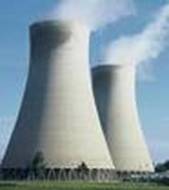
Not enough oxygen
Where is oxygen found and produced ?
In our body
We are 60% oxygen (2/3 of our body is composed of water, which is 8/9ths oxygen). Of all the elements the body needs, only oxygen is in such constant demand that its absence brings death in minutes.
About 90% of the body’s energy is created using oxygen. One of the main ingredients of cellular energy production
In our air
Pre-1900 Oxygen levels in our air were 32%.
Some cities are now as low as 10-15%. The world’s oxygen is produced from 2 main sources:
- The sun shining on new forest growth
- Sunlight on ocean plankton – The clear-cutting of the rain-forest and ocean pollution has seriously depleted our oxygen supply.
The importance of oxygen in our body
Oxygen OXIDIZES substances
Mildly reactive oxygen begins an OXIDATION process (a series of chemical reactions), which produces a whole family of its much more reactive offspring, called “Active” Oxygen or Reactive Oxygen Species(ROS). These ROS take part in extremely complex OXIDATION reactions, to control various functions in the body.
Life’s Oxygen Paradox -“Meet Dr. ROS Jeckyll and Mr ROS Hyde”
Oxygen performs hundreds of essential tasks
Circulation, respiration and digestion need oxygen. However, the focus here is on oxygen’s role in: (a) metabolism and (b) detoxification.
METABOLISM
For cellular energy production

- Cancer Growth Rate Increases – Acidity surrounding cells can trigger T-cells to release Enzyme Growth Factors (EGFs). Stimulated by EGFs, the anaerobic cell begins to replicate wildly.
- Toxic Buildup – An increase in carbon monoxide, which is absorbed by hemoglobin many times better than oxygen, ties up and so prevents, hemoglobin from picking up fresh oxygen. Toxins, normally “burnt up”by oxidation, will build up in the blood, lymph, organs and body fat;
- Diminished Nerve Function – Excess lactic acid in the system will clog the nerve pathways, eventually causing calcification and degeneration;
- Cancer cells devitalize surrounding cells – toxic, acidic products of cancer cells affect normal functioning of surrounding cells, promoting their shift from respiratory to fermentative mechanisms. The extent of damage depends on the health of the surrounding cells
(b) DETOXIFICATION

ROS Enable the blood to be purified – of cellular waste, microbes and toxins, clearing the way for greater oxygen delivery to the cells, to be used for cellular ENERGY production.
Oxygen combines with waste and toxins, so they can be carried out of the body
The majority of parasites use anaerobic metabolisms when inhabiting a host. Anaerobic bacteria, which don’t need oxygen to survive, are beneficial in healthy intestines to break down waste matter. However, if they take up residence in other locations, as lower oxygen levels make it more habitable for them, they can cause disease. “Feeling at home” in low-level oxygen locations, they excrete toxins, create various uncomfortable symptoms, and also cause you to be under-nourished as they “eat” your food! Allowed to accumulate in the bloodstream, these “invaders” can cause damage to arteries with subsequent plaque build-up, which obstructs delivery of nutrients and oxygen for cellular energy production, and even more crucially – blocks blood flow to the heart.



















